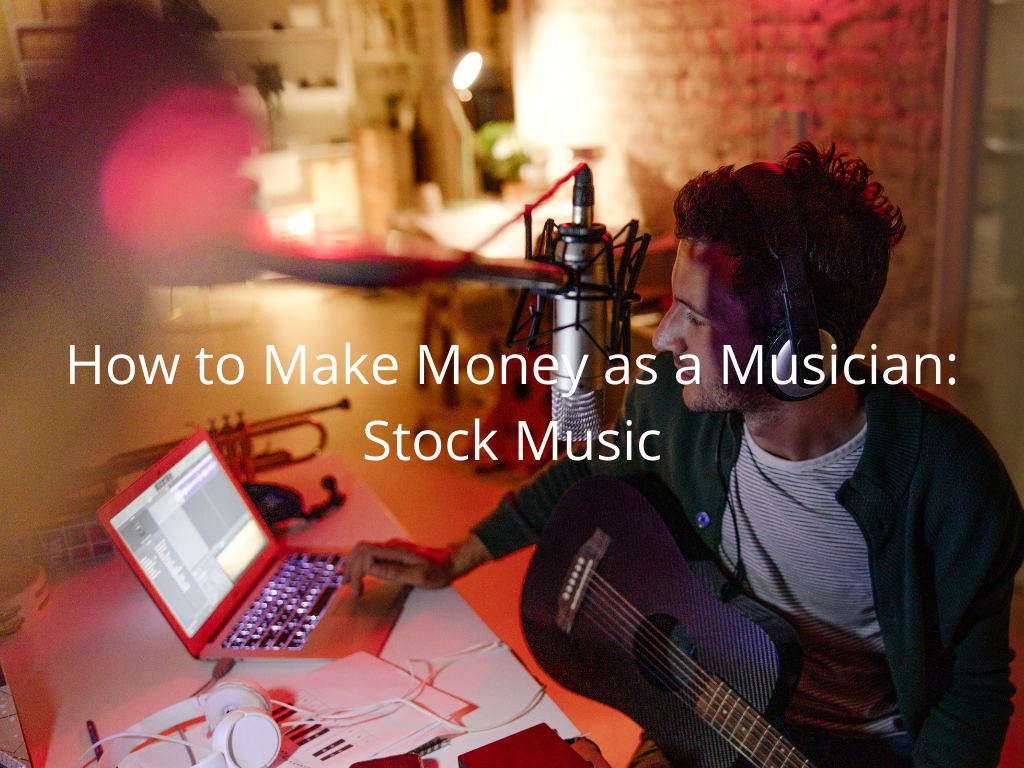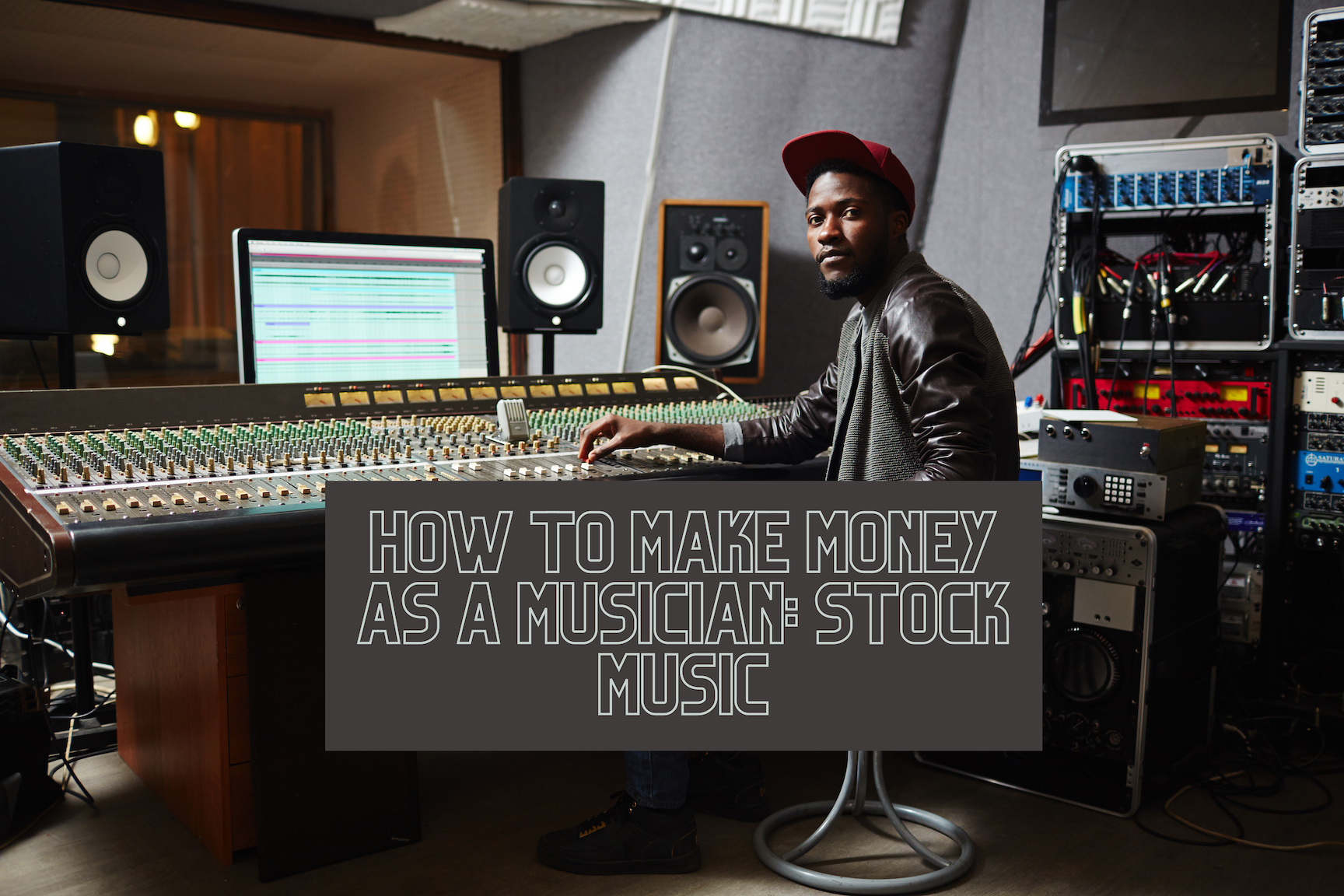Making money as a musician used to be all about selling albums and concert tickets. But nowadays, there are a lot of different ways for musicians to make money. In this blog post, we will discuss one of the easiest side incomes for musicians: stock music.
Gain from Selling Stock Music
Stock music is music that is available for licensing to be used in other media such as movies, documentaries, video games, YouTube videos, etc. It’s royalty-free music for which you sell a one-time fee to other people so they can use it in their own projects. This article will discuss what stock music is and how you can start licensing your own tracks today!
- Stock music is an easy way to make a passive income from your music
- Stock music can help you reach a wider audience
How to Make Money as a Musician: Stock Music
As a musician, one of the best ways to make money is by selling your music as stock music. Stock music is music that can be licensed for use in various media, such as films, TV shows, commercials, and video games.

By selling your music as stock music, you can earn a passive income from your work – meaning that you can continue to earn money from your music even after it has been released.
Moreover, stock music provides musicians with an opportunity to reach a wider audience and to have their work featured in a variety of different settings. If you’re looking for a way to monetize your musical talents, then selling stock music is definitely worth considering.
Licensing Your Music
There are many ways to make money in the music industry, and one of them is licensing your music for use in other people’s projects.
This can be an extremely lucrative way to earn income, as you can often charge a significant amount of money for the use of your music. In addition, it can be a great way to get your music out there and exposure to new audiences.
If you’re interested in making money by licensing your music, there are a few things you need to keep in mind.
First, you need to make sure that you own the copyright to your music. Otherwise, you won’t be able to license it for use in other people’s projects.
Second, you need to be aware of the different ways that you can license your music. There are a variety of different licenses available, each with its own set of terms and conditions.
It’s important to understand what each license entails before you sign it, as you don’t want to give away your music rights without getting anything in return.
Finally, you need to be proactive in licensing your music. Don’t just sit and wait for people to come to you – go out and find people who might be interested in using your music. There are a number of online marketplaces where you can list your music for licensing, and it’s also worth contacting production companies directly.
What to Sell
If you reach a point where you have an abundance of unfinished projects, great but not outstanding music, and money without realizing it, you’ve probably been storing it for years. While these music tracks are not getting anywhere as a whole they are very valuable for others.
If you have tracks like this, it’s time to start selling stock music. Stock music is music that is available for licensing to be used in other media such as movies, documentaries, video games, YouTube videos, etc. In other words, you’re selling the one-time rights to use your track in a specific project.
The new digital age has made it possible for practically anyone to release their music, but even more important is the ability to make money doing so.
The marketplaces are saturated with Garageband tracks and vocals that were never meant to be heard outside of a group chat or Soundcloud followers. So how do you make your product unique? If you’re a musician who is just starting out or someone with a large library of unfinished tracks, then selling stock music may be the right option for you.
Benefits of Stock Music
There are a number of benefits to selling your music as stock music. Here are some of the most important ones:
- Passive income: By selling your music as stock music, you can earn a passive income from your work. This means that you can continue to earn money from your music even after it has been released.
- Reach a wider audience: Stock music provides musicians with an opportunity to reach a wider audience and to have their work featured in a variety of different settings.
- Flexible licensing: There are a variety of different licenses available for stock music, each with its own set of terms and conditions. This allows you to choose the license that best suits your needs and the needs of the project you’re working on.
- Increased exposure: Selling stock music can be a great way to get your music out there and exposure to new audiences.
- Easy to use: Stock music is easy to use and can be quickly integrated into your project.
How to Get Started
If you’re interested in selling stock music, there are a few things you need to keep in mind.
First, you need to make sure that you own the copyright to your music. Otherwise, you won’t be able to license it for use in other people’s projects.
Second, you need to be aware of the different ways that you can license your music. There are a variety of different licenses available, each with its own set of terms and conditions. It’s important to understand what each license entails before you sign it, as you don’t want to give away your music rights without getting anything in return.
Finally, you need to be proactive in licensing your music. Don’t just sit and wait for people to come to you – go out and find people who might be interested in using your music. There are a number of online marketplaces where you can list your music for licensing, and it’s also worth contacting production companies directly.
Pond5 – Gives Artists an Opportunity to Make Money
Pond5 began as a project to give artists the chance to make a living doing what they loved. I would recommend Pond5.
If your creative field is more than just music Pond5 also carries footage, music, after effects, sound effects, photos, vectors, illustrations, and 3D models. Before you can begin, you’ll need to create a Pond5 contributor account and confirm your identity with a valid photo ID.
The Bottom Line
If you’re a musician, one great way to make some extra money is by licensing your music for use in other people’s projects. This is known as stock music, and it’s become a very popular option in recent years. Because it’s royalty-free, people don’t have to worry about paying additional fees every time they use your music.
If you’re looking for ways to make money as a musician, then selling your music as stock music on sites like Pond5 is definitely an option worth considering. It’s an easy way to make a passive income, and it can help you reach a wider audience.
Keep in mind, however, that you need to own the copyright to your music and be aware of the different licenses available. And most importantly, be proactive in licensing your music – go out and find people who might be interested in using it.
With a little effort, you can make a lot of money by licensing your music for use in other people’s projects!
Conclusion
Stock music is a great way for musicians to make some extra money. It’s easy to use and can be quickly integrated into your project. You can sell a one-time fee to other people so they can use it in their own projects. There are a variety of different licenses available, each with its own set of terms and conditions.
It’s important to understand what each license entails before you sign it, as you don’t want to give away your music rights without getting anything in return.
Be proactive in licensing your music and go out and find people who might be interested in using it. With a little effort, you can make a lot of money by licensing your music. We recommend Pond5 to get started and earn a passive income from your work.
Make Money as a Musician FAQ
What is Stock Music?
Stock music is music available for licensing to be used in other media such as movies, documentaries, video games, YouTube videos, etc. It’s royalty-free music for which you sell a one-time fee to other people so they can use it in their own projects.
Do I need to own the copyright to my music?
Yes, you need to own the copyright to your music in order to license it for use in other people’s projects.
What are the different types of licenses available?
There are a variety of different licenses available, each with its own set of terms and conditions. It’s important to understand what each license entails before you sign it.
How much money can I make by licensing my music?
It really depends on how popular your music is and how often it’s used. You could make a few hundred dollars or a few thousand dollars per year.
What is Pond5?
Pond5 began as a project to give artists the chance to make a living doing what they loved. If your creative field is more than just music Pond5 also carries footage, music, after effects, sound effects, photos, vectors, illustrations, and models.
Before you can begin, you’ll need to create a Pond5 contributor account and confirm your identity with a valid photo ID.
I’m not a musician – can I still use Pond5?
Absolutely! Pond5 offers a wide variety of stock media to choose from. If you’re not a musician, you can still find what you need on our site.
How do I get started?
The best way to get started is by creating a Pond5 contributor account and uploading some of your music. Once it’s been approved, you can start licensing it for use in other people’s projects.










